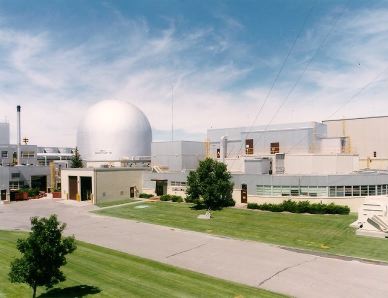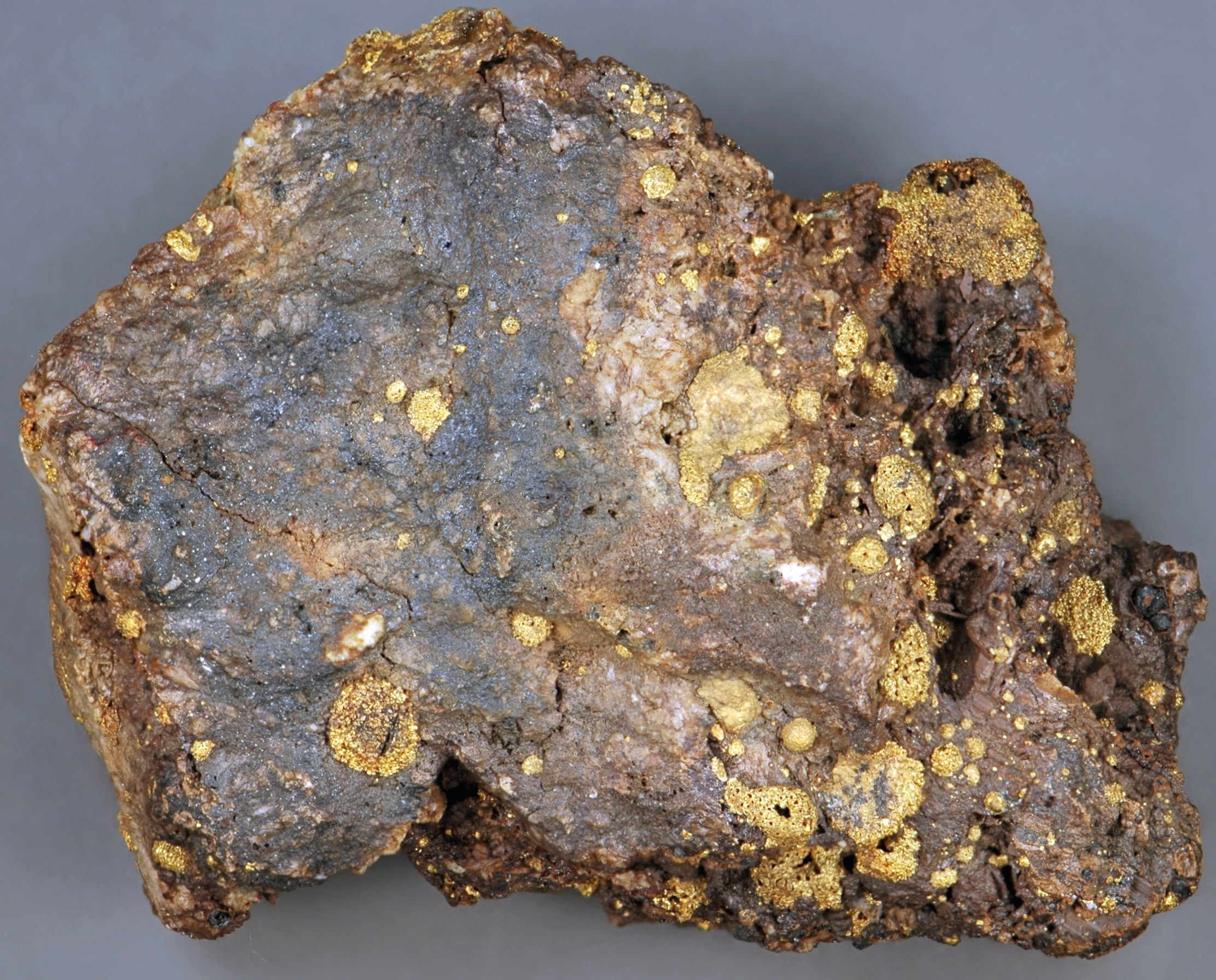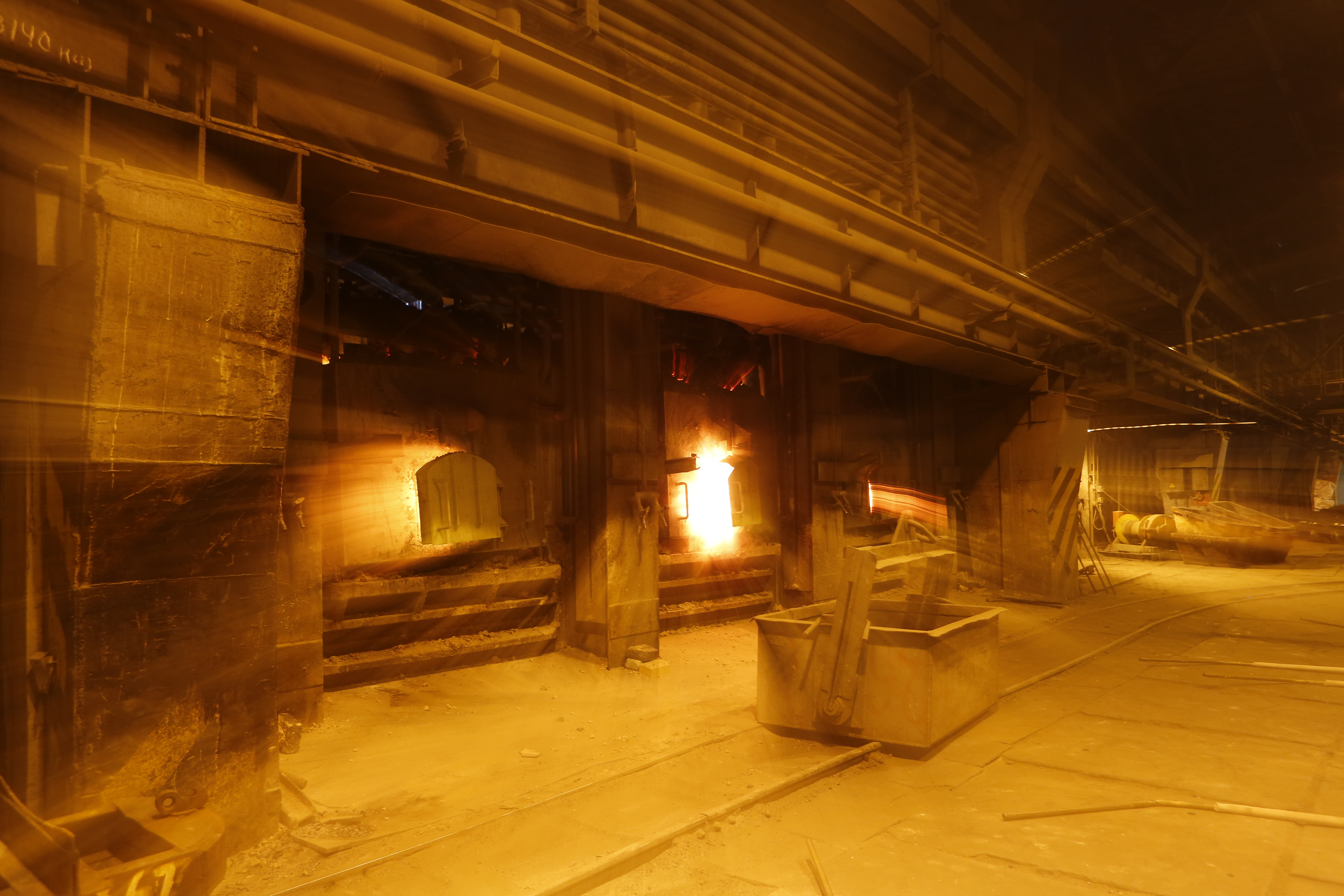|
Pyroprocessing
Pyroprocessing (from Greek Πυρος = ''fire'') is a process in which materials are subjected to high temperatures (typically over 800 °C) in order to bring about a chemical or physical change. Pyroprocessing includes such terms as ore-roasting, calcination and sintering. Equipment for pyroprocessing includes kilns, electric arc furnaces and reverberatory furnaces. Cement manufacturing is a very common example of pyroprocessing. The raw material mix ( raw meal) is fed to a kiln where pyroprocessing takes place. As with most industries, pyroprocessing is the most energy-intensive part of the industrial process. Recycling used nuclear fuel through pyroprocessing Argonne National Laboratory pioneered the development of pyrochemical processing, or pyroprocessing, a high-temperature method of recycling reactor waste into fuel, demonstrating it paired with the EBR-II and then proposed commercializing it in the Integral Fast Reactor. The latter was cancelled by the Clinton ... [...More Info...] [...Related Items...] OR: [Wikipedia] [Google] [Baidu] |
Integral Fast Reactor
The integral fast reactor (IFR), originally the advanced liquid-metal reactor (ALMR), is a design for a nuclear reactor using fast neutrons and no neutron moderator (a "fast" reactor). IFRs can breed more fuel and are distinguished by a nuclear fuel cycle that uses reprocessing via electrorefining at the reactor site. The IFR was a sodium-cooled fast reactor (SFR) is its closest surviving fast breeder reactor, a type of Generation IV reactor. The U.S. Department of Energy (DOE) began designing an IFR in 1984 and built a prototype, the Experimental Breeder Reactor II. On April 3, 1986, two tests demonstrated the safety of the IFR concept. These tests simulated accidents involving loss of coolant flow. Even with its normal shutdown devices disabled, the reactor shut itself down safely without overheating anywhere in the system. The IFR project was canceled by the US Congress in 1994, three years before completion. [...More Info...] [...Related Items...] OR: [Wikipedia] [Google] [Baidu] |
Kiln
A kiln is a thermally insulated chamber, a type of oven, that produces temperatures sufficient to complete some process, such as hardening, drying, or Chemical Changes, chemical changes. Kilns have been used for millennia to turn objects made from clay into pottery, Tile, tiles and bricks. Various industries use rotary kilns for pyroprocessing (to calcinate ores, such as limestone to Lime (material), lime for Cement kiln, cement) and to transform many other materials. Etymology According to the Oxford English Dictionary, kiln was derived from the words cyline, cylene, cyln(e) in Old English, in turn derived from Latin ''culina'' ('kitchen'). In Middle English, the word is attested as kulne, kyllne, kilne, kiln, kylle, kyll, kil, kill, keele, kiele. In Greek the word ''καίειν, kaiein'', means 'to burn'. Pronunciation The word 'kiln' was originally pronounced 'kil' with the 'n' silent, as is referenced in ''Webster's Dictionary of 1828'' and in ''English Words as Sp ... [...More Info...] [...Related Items...] OR: [Wikipedia] [Google] [Baidu] |
Ancient Greek
Ancient Greek (, ; ) includes the forms of the Greek language used in ancient Greece and the classical antiquity, ancient world from around 1500 BC to 300 BC. It is often roughly divided into the following periods: Mycenaean Greek (), Greek Dark Ages, Dark Ages (), the Archaic Greece, Archaic or Homeric Greek, Homeric period (), and the Classical Greece, Classical period (). Ancient Greek was the language of Homer and of fifth-century Athens, fifth-century Athenian historians, playwrights, and Ancient Greek philosophy, philosophers. It has contributed many words to English vocabulary and has been a standard subject of study in educational institutions of the Western world since the Renaissance. This article primarily contains information about the Homeric Greek, Epic and Classical periods of the language, which are the best-attested periods and considered most typical of Ancient Greek. From the Hellenistic period (), Ancient Greek was followed by Koine Greek, which is regar ... [...More Info...] [...Related Items...] OR: [Wikipedia] [Google] [Baidu] |
Roasting (metallurgy)
Roasting is a process of heating an ore to under flowing air. It is a step in the processing of certain ores. More specifically, roasting is often a metallurgical process involving gas–solid reactions at elevated temperatures with the goal of purifying the metal component(s). Often before roasting, the ore has already been partially purified, e.g. by froth flotation. The concentrate is mixed with other materials to facilitate the process. The technology is useful in making certain ores usable but it can also be a serious source of air pollution. Roasting consists of thermal gas–solid reactions, which can include oxidation, reduction, chlorination, sulfation, and pyrohydrolysis. In roasting, the ore or ore concentrate is treated with very hot air. This process is generally applied to sulfide minerals. During roasting, the sulfide is converted to an oxide, and sulfur is released as sulfur dioxide, a gas. For the ores Cu2S ( chalcocite) and ZnS (sphalerite), balance ... [...More Info...] [...Related Items...] OR: [Wikipedia] [Google] [Baidu] |
Calcination
Calcination is thermal treatment of a solid chemical compound (e.g. mixed carbonate ores) whereby the compound is raised to high temperature without melting under restricted supply of ambient oxygen (i.e. gaseous O2 fraction of air), generally for the purpose of removing impurities or volatile substances and/or to incur thermal decomposition. The root of the word calcination refers to its most prominent use, which is to remove carbon from limestone (calcium carbonate) through combustion to yield calcium oxide (quicklime). This calcination reaction is CaCO3(s) → CaO(s) + CO2(g). Calcium oxide is a crucial ingredient in modern cement, and is also used as a chemical flux in smelting. Industrial calcination generally emits carbon dioxide (). A calciner is a steel cylinder that rotates inside a heated furnace and performs indirect high-temperature processing (550–1150 °C, or 1000–2100 °F) within a controlled atmosphere. Etymology The process of calcination ... [...More Info...] [...Related Items...] OR: [Wikipedia] [Google] [Baidu] |
Sintering
Sintering or frittage is the process of compacting and forming a solid mass of material by pressure or heat without melting it to the point of liquefaction. Sintering happens as part of a manufacturing process used with metals, ceramics, plastics, and other materials. The atoms/molecules in the sintered material diffuse across the boundaries of the particles, fusing the particles together and creating a solid piece. Since the sintering temperature does not have to reach the melting point of the material, sintering is often chosen as the shaping process for materials with extremely high melting points, such as tungsten and molybdenum. The study of sintering in metallurgy, metallurgical powder-related processes is known as powder metallurgy. An example of sintering can be observed when ice cubes in a glass of water adhere to each other, which is driven by the temperature difference between the water and the ice. Examples of pressure-driven sintering are the compacting of snowfa ... [...More Info...] [...Related Items...] OR: [Wikipedia] [Google] [Baidu] |
Electric Arc Furnace
An electric arc furnace (EAF) is a Industrial furnace, furnace that heats material by means of an electric arc. Industrial arc furnaces range in size from small units of approximately one-tonne capacity (used in foundry, foundries for producing cast iron products) up to about 400-tonne units used for secondary steelmaking. Arc furnaces used in research laboratories and by Dentistry, dentists may have a capacity of only a few dozen grams. Industrial electric arc furnace temperatures can reach , while laboratory units can exceed . In electric arc furnaces, the material inside the furnace (referred to as a charge) is directly exposed to an electric arc, and the current from the electrode terminals passes through the charge material. Arc furnaces differ from induction furnaces, which use eddy currents to heat the charge. History In the 19th century, a number of people had employed an electric arc to melt iron. Sir Humphry Davy conducted an experimental demonstration in 1810; we ... [...More Info...] [...Related Items...] OR: [Wikipedia] [Google] [Baidu] |
Reverberatory Furnace
A reverberatory furnace is a metallurgy, metallurgical or process Metallurgical furnace, furnace that isolates the material being processed from contact with the fuel, but not from contact with combustion gases. The term ''reverberation'' is used here in a generic sense of ''rebounding'' or ''Reflection (physics), reflecting'', not in the acoustics, acoustic sense of ''echoing''. Operation Chemistry determines the optimum relationship between the fuel and the material, among other variables. The reverberatory furnace can be contrasted on the one hand with the blast furnace, in which fuel and material are mixed in a single chamber, and, on the other hand, with crucible, Muffle furnace, muffling, or Retort, retort furnaces, in which the subject material is isolated from the fuel and all of the products of combustion including gases and flying ash. There are, however, a great many furnace designs, and the terminology of metallurgy has not been very consistently defined, so it is ... [...More Info...] [...Related Items...] OR: [Wikipedia] [Google] [Baidu] |
Raw Meal
Raw is an adjective usually describing: * Raw materials, basic materials from which products are manufactured or made * Raw food, uncooked food Raw or RAW may also refer to: Computing and electronics * .RAW, a proprietary mass spectrometry data format * Raw audio format, a file type used to represent sound in uncompressed form * Raw image format, a variety of image files used by digital cameras, containing unprocessed data * Rawdisk, binary level disk access * Read after write, technologies used for CD-R and CD-RW * Read after write (RAW) hazard, a data dependency hazard considered in microprocessor architecture * Raw display, a raw framed monitor. Film and television * Raw TV, a British TV production company * ''Raw'' (film), a 2016 film * ''Raw'' (TV series), an Irish drama series * ''Eddie Murphy Raw'', a 1987 live stand-up comedy recording * '' Ramones: Raw'', a 2004 music documentary * ''Raw FM'', an Australian television series * ''WWE Raw'', a weekly World Wrestling E ... [...More Info...] [...Related Items...] OR: [Wikipedia] [Google] [Baidu] |
Argonne National Laboratory
Argonne National Laboratory is a Federally funded research and development centers, federally funded research and development center in Lemont, Illinois, Lemont, Illinois, United States. Founded in 1946, the laboratory is owned by the United States Department of Energy and administered by UChicago Argonne LLC of the University of Chicago. The facility is the largest national laboratory in the Midwestern United States, Midwest. Argonne had its beginnings in the Metallurgical Laboratory of the University of Chicago, formed in part to carry out Enrico Fermi's work on nuclear reactors for the Manhattan Project during World War II. After the war, it was designated as the first national laboratory in the United States on July 1, 1946. In its first decades, the laboratory was a hub for peaceful use of nuclear physics; nearly all operating commercial nuclear power plants around the world have roots in Argonne research. More than 1,000 scientists conduct research at the laboratory, in the ... [...More Info...] [...Related Items...] OR: [Wikipedia] [Google] [Baidu] |
EBR-II
Experimental Breeder Reactor-II (EBR-II) was a sodium-cooled fast reactor designed, built and operated by Argonne National Laboratory at the National Reactor Testing Station in Idaho. It was shut down in 1994. Custody of the reactor was transferred to Idaho National Laboratory after its founding in 2005. Initial operations began in July 1964 and it achieved criticality in 1965 at a total cost of more than US$32 million ($ in dollars). The original emphasis in the design and operation of EBR-II was to demonstrate a complete breeder-reactor power plant with on-site reprocessing of solid metallic fuel. Fuel elements enriched to about 67% uranium-235 were sealed in stainless steel tubes and removed when they reached about 65% enrichment. The tubes were unsealed and reprocessed to remove neutron poisons, mixed with fresh U-235 to increase enrichment, and placed back in the reactor. Testing of the original breeder cycle ran until 1969, after which time the reactor was used to te ... [...More Info...] [...Related Items...] OR: [Wikipedia] [Google] [Baidu] |
Electrorefining
Electrowinning, also called electroextraction, is the electrodeposition of metals from their ores that have been put in solution via a process commonly referred to as leaching. Electrorefining uses a similar process to remove impurities from a metal. Both processes use electroplating on a large scale and are important techniques for the economical and straightforward purification of non-ferrous metals. The resulting metals are said to be ''electrowon''. In electrowinning, an electrical current is passed from an inert anode through a ''leach'' solution containing the dissolved metal ions so that the metal is recovered as it is reduced and deposited in an electroplating process onto the cathode. In electrorefining, the anode consists of the impure metal (e.g., copper) to be refined. The impure metallic anode is oxidized and the metal dissolves into solution. The metal ions migrate through the electrolyte towards the cathode where the pure metal is deposited. Insoluble solid imp ... [...More Info...] [...Related Items...] OR: [Wikipedia] [Google] [Baidu] |







